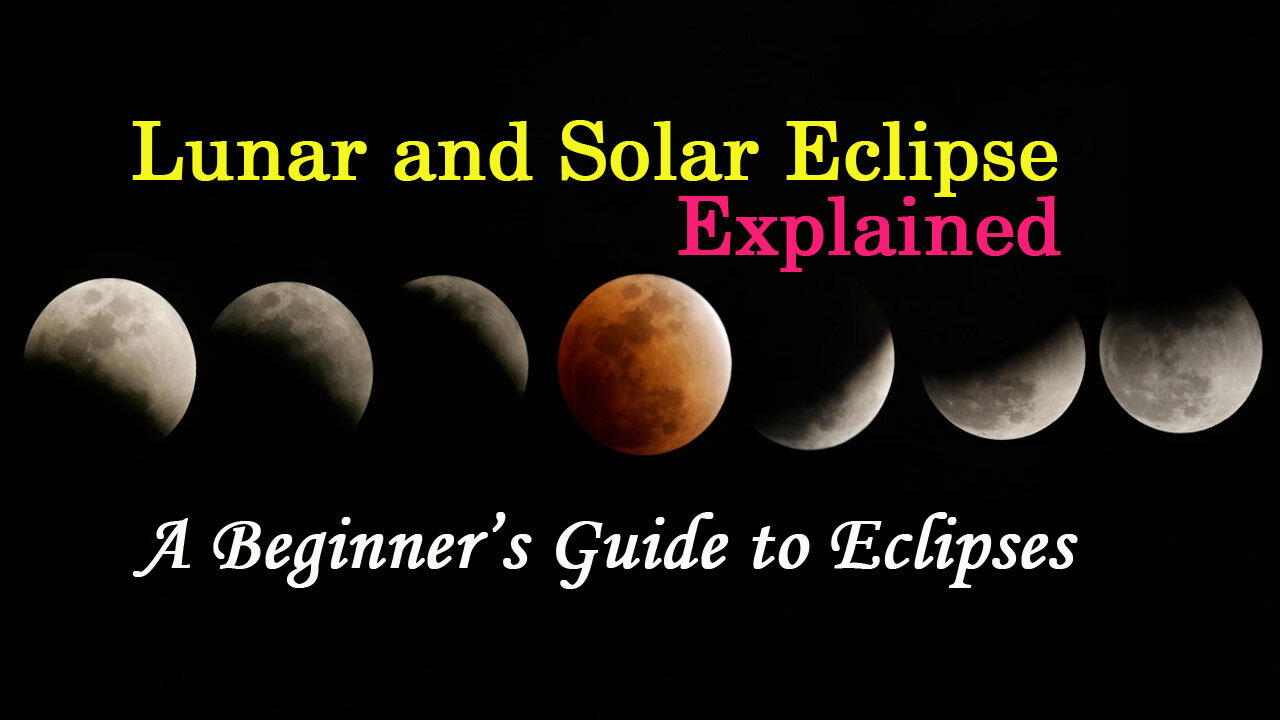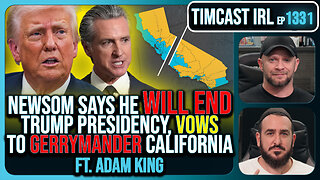Premium Only Content

Lunar and Solar Eclipse Explained: A Beginner’s Guide to Eclipses
Solar and lunar eclipses are celestial phenomena that occur when the sun, moon and Earth align in a way that either the moon casts a shadow on Earth or the latter casts a shadow on the moon. So what are the similarities and differences between lunar and solar eclipse?
Just as Earth moves around the sun in an elliptical orbit every year, our natural satellite—the moon—also revolves around the Earth. It takes about 27.322 days for the moon to complete one revolution around our planet. Due to all the inter-related motion happening between these three celestial bodies, several physical phenomena occur. When the new moon, during its revolution around the Earth, moves between the sun and the Earth, it blocks out the sun’s rays, which casts a shadow on parts of the planet. This is called an eclipse of the sun or a solar eclipse. In other words, a solar eclipse happens when the moon passes in a direct line between the sun and the Earth.
Since the moon continuously revolves around the Earth, it’s only natural that it sometimes comes between the sun and the Earth, while at other times it goes BEHIND the Earth, so that the Earth comes between the moon and the sun. When the latter happens, we see a lunar eclipse.
-
 1:56:40
1:56:40
Badlands Media
6 hours agoDevolution Power Hour Ep. 380
86.6K12 -
 LIVE
LIVE
Drew Hernandez
9 hours agoCOMEY, WRAY, CLAPPER EXPOSED & TRUMP CALLS OUT BONDI TO DO HER JOB
1,227 watching -
 2:08:55
2:08:55
Inverted World Live
5 hours agoNew FAA Docs Reveal Black Cube Sighting | Ep. 91
36.5K4 -
 54:29
54:29
Man in America
9 hours agoThe Dollar Ponzi SCAM is Collapsing & the Middle Class Is in DANGER w/ Collin Plume
33.5K33 -
 21:26
21:26
Paul Barron Network
5 days ago $0.61 earnedGTA 6 Stablecoin Potential🚀Animoca's MASSIVE Crypto Treasury!🔥Yat Siu INTERVIEW
13.5K -
 28:08
28:08
Unshakable With April Chapman
1 day agoWhy Democratic Socialists Want to Abolish the Family
6.7K9 -
 1:48:46
1:48:46
The Illusion of Consensus
1 month agoPsychedelic Therapy In a Political Landscape: NIH Funding & Bipartisan Support w/ Dr. Carhart-Harris
6.67K -

I_Came_With_Fire_Podcast
7 hours agoChina Wrecks Itself, But America Helps, While Roblox Protects Predators and AI Use Plummets
21.4K1 -
 2:44:25
2:44:25
TimcastIRL
5 hours agoGavin Newsom Says He Will End Trump Presidency, Vows To Gerrymander California | Timcast IRL
156K74 -
 3:24:15
3:24:15
Barry Cunningham
10 hours agoCOULD PRESIDENT TRUMP HAVE A MUCH BIGGER REASON FOR TAKING OVER WASHINGTON D.C.?
68.9K86